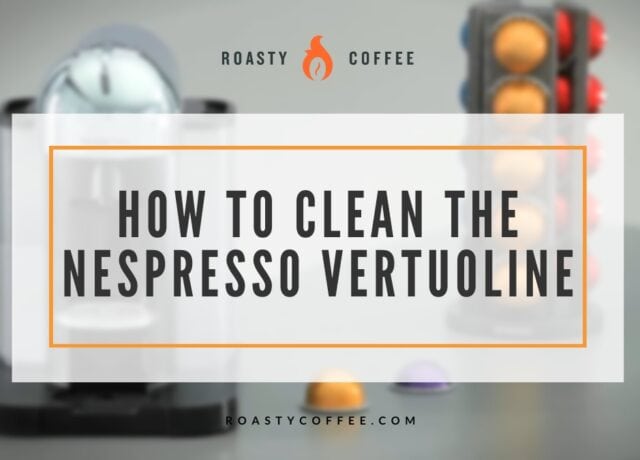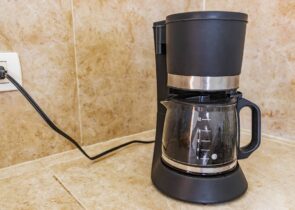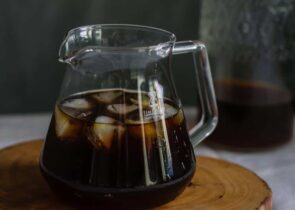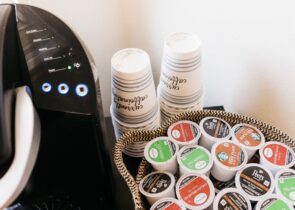You aren’t yourself without that first cup of coffee in the morning. It’s a ritual you plan your life around. The first sip is the beginning of a great day, and it all starts at your Keurig coffee maker. But what happens when that Keurig plastic taste won’t go away?
You know the taste: a bitter, artificial flavor that cuts through the boldness of your freshly brewed cup of coffee. So, where does that Keurig plastic K-cup taste come from? And how can you get rid of it when it persists cup after cup?
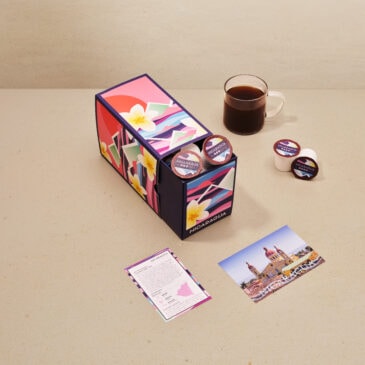
"The best coffee pod I've ever tasted"
Yes, we mean that. Finally, specialty coffee for your KCup machine, roasted fresh to your order by our friends at Atlas Coffee in Austin, TX! Get 50% OFF to try it with code ROASTYPODS
What Is That Plastic Taste?
To address the Keurig plastic taste that won’t go away, you must first understand where that taste is coming from. It all comes down to outgassing.
Outgassing is a phenomenon that occurs when a newly manufactured product off the assembly line is wrapped tightly with packing material. In this process, the plastic parts of the coffee maker release gases. The plastic smell becomes encased in the packaging, embedding itself in every piece of plastic in your machine and making your coffee taste foul. Under normal circumstances, you need to wash the product and air it out long enough to let those plastic fumes dissipate.
The difference with your Keurig machine is that you are using the parts being affected by outgassing to make something you ingest, meaning hot water will come in contact with the plastic components before being turned into your cup of coffee. It’s almost impossible to avoid that Keurig plastic taste from coffee makers in this case.
How to Get Rid of the Keurig Plastic Taste
Luckily, a few solutions might help when the Keurig plastic taste doesn’t go away.
Vinegar Rinse
A white vinegar rinse is the most commonly used method of addressing the Keurig plastic taste of a smelly coffee maker. Despite the popularity of mixing vinegar with water to clean equipment, thousands of people still find themselves getting a mouthful of plastic flavor the following day. However, it’s essential to be aware that some people are susceptible to tasting certain chemicals.
When performing a vinegar rinse, there are a couple of ways to do it. The most aggressive approach involves running undiluted vinegar straight through your machine. A more moderate approach would be to dilute your vinegar solution to an equal ratio of water to vinegar.
Start by thoroughly washing your machine, including your water reservoir and all parts that you can disassemble. Use warm water with a little bit of soap. Clean as much of the device as you can, both inside and out.
Next, remove the reservoir water filter. This will allow all the vinegar rinse to reach the inner workings of your machine without damaging the charcoal filter. Then fill the polycarbonate water reservoir with the vinegar solution – whether diluted or undiluted – to the fill line.
Set your Keurig to brew at the highest possible temperature and run the brew cycle. Once that cycle is done, continue running additional brew cycles until the reservoir is empty. After that, repeat the steps with straight water until you can no longer taste vinegar after the brew cycle has been run.
Hot Water Rinse

The hot water rinse is similar to the vinegar rinse. While it doesn’t have the odor-fighting power of vinegar, some find it an effective way to treat a Keurig plastic taste that won’t go away.
Using soapy water that’s a little warm, thoroughly wash your machine inside and out, including all removable parts. Then fill your reservoir with water up to the fill line.
Next, set the Keurig to the highest possible water temperature and run the brew cycle without using a K-cup. Continue running brew cycles until the reservoir is empty. You can repeat these steps with a second reservoir to be sure that your plastic taste is gone.
The theory behind why the hot water rinse works has to do with outgassing. It should, in view, remove the plastic residues remaining on your machine from the manufacturing process. As those residues are washed away, you’ll find the plastic taste disappearing.
Reusable K-Cups
One of the biggest reasons you might be experiencing a plastic taste in your coffee is because of the amount of plastic the water you’re using to brew your cups of coffee is touching. However, a piece that you may not think of is the plastic K-cup. While it holds your coffee grinds, it’s also made of plastic, meaning it’s another source of plastic waste.
To remove this additional plastic component, invest in a reusable K-cup. There are several stainless steel options that you can fill with your choice of coffee. Along with helping to remove a source of plastic that could be contributing to the plastic taste in your Keurig, there are several benefits to going with a reusable K-cup.
First, you’ll use less plastic. With environmental awareness on the rise, opting for reusable options for everyday items is not only on-trend, but it’s good for the Earth, too.
A reusable K-cup can also save you money. For example, it’s cheaper to buy large amounts of gourmet coffee grinds in the flavors of your choice than it is to buy the individually made K-cups.
Activated Charcoal Rinse
Another type of rinse you can try is an activated charcoal rinse. Activated charcoal is a substance in your charcoal water filters made when a heating process is applied to ordinary charcoal while using a certain type of gas. This leads to the development of charcoal pores.
Chemical compounds are trapped In these charcoal pores. By trapping the substances, the charcoal keeps them from absorbing into your machine and thus your coffee, creating less-plasticky coffee. So while the Keurig has a charcoal water filter, it’s meant to improve the taste of your coffee by treating the water you use, not by treating the entirety of your machine.
To perform an activated charcoal water rinse:
- Start with a warm, soapy bath for your Keurig machine.
- Clean it inside and out.
- Follow that by mixing in ¾ of a teaspoon of activated charcoal to warm water.
- Make sure it’s food-grade activated charcoal.
Pour your activated charcoal solution into the reservoir and run the brew cycle on the highest possible setting. Next, run enough brew cycles at that temperature to fully use up the pool of water. Follow that by running brew cycles for a full reservoir of clean water. This will clean out any remaining charcoal from your machine, leaving it plastic-taste-free.
The key to the activated charcoal working is that it runs through the inner tubing routes of the water filter assembly. So, to have better results, or if the plastic taste continues, increase the amount of activated charcoal you mix into the warm water.
Descaling
As you use your machine, minerals will build up within the internal workings. To remove the minerals, you have to descale your machine regularly.
Descaling should be done every three to six months. Some machines include an indicator to tell you when to descale your appliance, but getting in a routine is the best thing you can do.
To descale your machine, wash the reservoir well with hot water. Then run a descaling solution through a brew cycle without a K-cup. This can thoroughly clean the internal parts you aren’t able to reach by hand.
Clean Regularly
One of the best things you can do to prevent that horrible plastic taste in your Keurig machine is to create a regular cleaning schedule for it. If you don’t, you could risk bacteria growing in your appliance’s inner tubing and components.
It’s simple: regular cleaning means excellent coffee. And if you have a Keurig plastic taste that won’t go away, try one of these easy solutions.
Happy Caffeinating!


